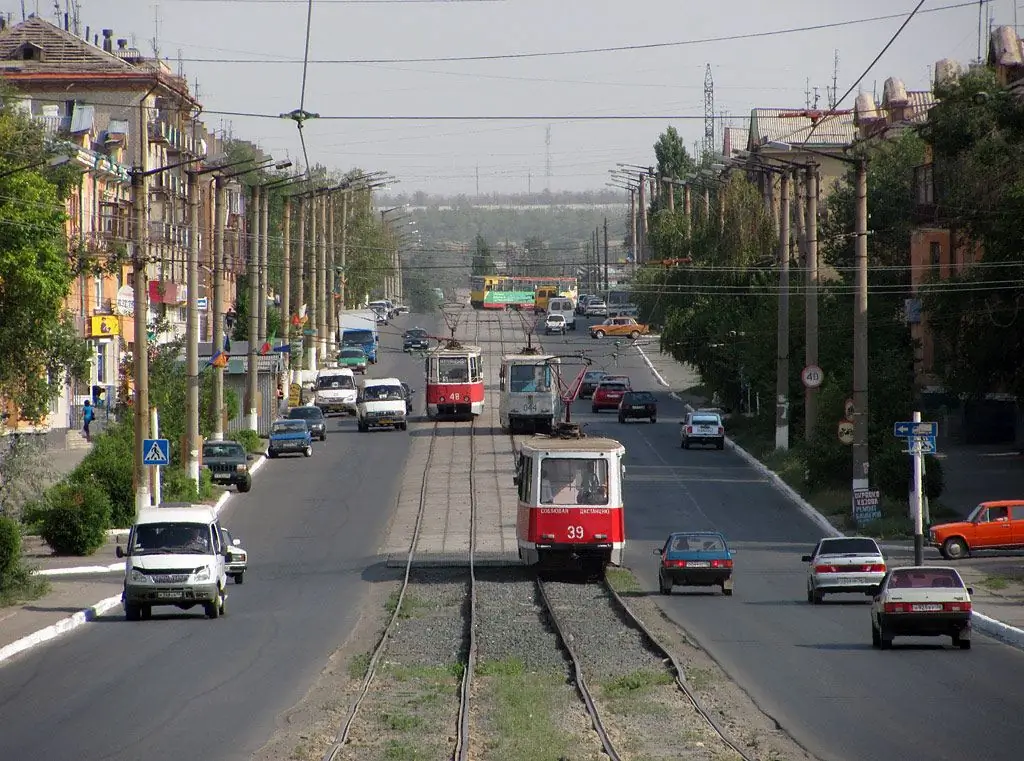- Author Henry Conors [email protected].
- Public 2024-02-12 02:55.
- Last modified 2025-01-23 09:07.
Kansk - one of the cities of the Krasnoyarsk Territory, is the center of the urban district with the same name. It is located on one of the tributaries of the Yenisei - the Kan River. It is located at a distance of 247 km east of Krasnoyarsk. Kansk was founded in 1628. It has an area of 96 sq. km. The current population is 90,231. The population of Kansk is gradually decreasing.

Geographic features
Kansk is located in the south-east of Siberia, in a zone of sharply continental climate. Winters are cold and relatively little snowy, while summers are moderate and short. In January, the average monthly temperature is -19.4 degrees, and in July - +19.1 degrees. The annual average temperature is about zero degrees. During the year, 525 mm of precipitation falls, which is a sufficient amount for a cold climate. Time in the city is 4 hours ahead of Moscow.

Economy and transport
Kansk is a traditional industrial city. The main industry here is wood processing. In total there are 7 majorenterprises, including a plant for the production of polymer packaging and a thermal power plant. Therefore, the environmental situation in this city is likely to be average.
The transport system is poorly developed. On the streets you can find buses and minibuses, which is not surprising, given the small size of the city. Long-distance buses also depart from Kansk.

Sights of Kansk
The main attractions of this small Siberian town include the following.
- The Cathedral of the Life-Giving Trinity is an Orthodox church built at the beginning of the 19th century. At the beginning of the 20th century, it was reconstructed.
- Triumphal Arch "Royal Doors". This object appeared in 2006.
- Palm alley. Dedicated to film festivals. Opened in 2008.
- Drama theatre. This cultural object appeared in 1907. During its existence, many thousands of performances and plays have been shown here.
Population of Kansk
Until recently, Kansk was a city with a rapidly growing population. So, in 1724 only 250 people lived here. In 1856 there were already 2,000, and in 1917 - 15,000 inhabitants. The peak of the population of Kansk occurred in 1990, when 110 thousand people lived in the city. This population remained until 1996, from which it began to decrease. This decline continues to this day. As of 2017, 90,231 people are registered in the city. According to this indicator, Kansk is on the 190th place among the cities of the Russian Federation. At the same time, within the Krasnoyarsk Territory, itis in fourth place in terms of population.

Obviously, the population of the city will continue to decrease in the coming years. This also applies to all other cities in Russia with a convex population curve, which were typical of the heyday in the Soviet years and decline since the era of perestroika. There are a lot of such cities in our country.
The population density in Kansk is 951.8 people/km2. The national composition is dominated by Russians.
Employment in Kansk
There are a large number of vacancies in Kansk, mainly related to working speci alties, especially in the field of woodworking. Salaries are good almost everywhere, most often in the region of 25-35 thousand rubles, but there are also many where salaries are above or below this range.
Obviously, the disadvantage of this situation is that not everyone is suitable for such obviously hard work. This, apparently, explains the outflow of residents, and above all, young people. The opinions of the citizens of this city eloquently testify to the departure of young people. They specifically emphasize that it is for young people that living conditions in Kansk are unfavorable. They also write about the absence of any programs to improve the socio-demographic situation. For young people there are serious problems with employment. There are a lot of drinking people, drug addicts in the city. The proportion of pensioners is also high.
Thus, despite the large number of well-paid vacancies, the employment situation in Kansk cannot be considered favorable.
Conclusion
From all this we can conclude that Kansk is a city with a rather harsh climate and a difficult social and demographic situation. Recently, there has been a decrease in the population of the city of Kansk, associated with the migration of young people to other regions of the country. It is for this category of residents that living conditions in this district center are the most unfavorable. At the same time, wages in Kansk are quite good (according to Russian rates). However, the negative trends are likely to continue in the future.






